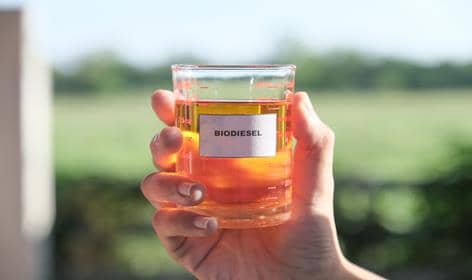Written on: December 6, 2022 by ICM
Clean Fuels Alliance America criticized the Environmental Protection Agency’s (EPA) proposed Renewable Fuel Standard (RFS) volumes for 2023 and beyond for undercutting investments in biodiesel and renewable diesel capacity. The minor increases for biomass-based diesel volumes in 2023, 2024 and 2025 are below the industry’s existing production and ignore the clean fuels industry’s significant investments in new capacity. The volumes provide no additional space for sustainable aviation fuel and short-circuit the nation’s goals to cut carbon emissions.
“EPA’s overdue set proposal significantly undercounts existing biomass-based diesel production and fails to provide growth for investments the industry has already made in additional capacity, including for sustainable aviation fuel. The volumes EPA is proposing for 2023, 2024 and 2025 ignore the more than 3 billion gallons currently in the market and fail to take into account the planned growth of the clean fuels sector,” said Clean Fuels VP of Federal Affairs Kurt Kovarik.
EPA’s data from the RFS program show that the U.S. market reached 3.1 billion gallons of biomass-based diesel in 2021 and already 2.9 billion gallons through October 2022, with two months still to go. The Energy Information Administration’s (EIA) Short Term Energy Outlook, which informs EPA’s decisions on annual RFS volumes, currently projects a 500-million-gallon increase in biodiesel and renewable diesel consumption for 2023. EIA has also projected 2.4. billion gallons of added renewable diesel capacity coming online by 2024 and calculated another 1.8 billion gallons in announced planned capacity.
“The biodiesel and renewable diesel industry has already made considerable investments in production capacity and distribution infrastructure that will come online by 2025. The soybean and canola industries have invested more than $4 billion to bring additional feedstock capacity online over the next several years,” Kovarik continued. “EPA’s proposed biomass-based diesel volumes undercut those investments.”
Clean Fuels appreciates EPA’s final rule creating a pathway to produce renewable diesel, jet fuel, heating oil, naphtha, and liquefied petroleum gas (LPG) from canola oil, which will generate even more biomass-based diesel and advanced biofuel gallons for the program. The approval enables a more diverse feedstock supply for the clean fuels industry. But the potential growth is not accounted for in the proposed volumes.
Clean Fuels supports EPA’s proposed alternative compliance method to document points of origin for used cooking oil supplies under separated food waste plans. This method will allow small producers to continue using a low-carbon feedstock and rely on documentation from used cooking oil aggregators.
“The clean fuels industry is meeting and exceeding all of the statutory factors that EPA is supposed to consider when setting volumes,” Kovarik added. “Our industry’s growth can generate new jobs and increase economic opportunities for growers, fuel producers and other economic sectors. Increasing production of clean fuels improves U.S. energy security, lowers diesel fuel prices, and generates carbon and emission reductions today that are necessary to meet future national environmental goals.”
Recently, Clean Fuels published a new study, “Economic Impact of Biodiesel on the U.S. Economy 2022,” conducted by LMC International. The study finds that based on 2021 market data, the biodiesel and renewable diesel industry produced 3.1 billion gallons and generated $23.2 billion in economic activity, while supporting 75,200 jobs paying $3.6 billion in annual wages in the U.S. For every 100-million-gallon increase in domestic clean fuel production, the direct, indirect and induced economic activity increases by $1.09 billion and U.S. jobs grow by 3,185. The largest economic and employment benefits occurred in the farming, oilseed processing, and fuel production sectors.
The study further calculates that producing 6 billion gallons of clean fuels in the U.S. would increase overall economic activity from the current $23.2 billion to $61.6 billion and support 187,003 jobs earning $8.8 billion in wages. The construction of additional capacity would increase economic activity by an added $4.3 billion and support an additional 144,500 related temporary jobs earning $5.8 billion in wages.
When setting RFS volumes, EPA must consider the infrastructure and rate of future commercial production for advanced biofuels like biodiesel, renewable diesel and SAF. According to the EIA, biodiesel and renewable diesel capacity is already 750 million gallons higher in 2022 compared 2021. EIA’s Short Term Energy Outlook projects availability of 3.9 billion gallons of biodiesel and renewable diesel in 2023. Further, USDA’s successful Higher Blends Infrastructure Incentive Program has already supported infrastructure investments for an additional 1 billion gallons of biodiesel. Congress has made a strong commitment to continue infrastructure grants through 2030, Clean Fuels Alliance America said.
Source: Clean Fuels Says RFS Proposal for 2023 and Beyond Woefully Underestimates Biomass-based Diesel